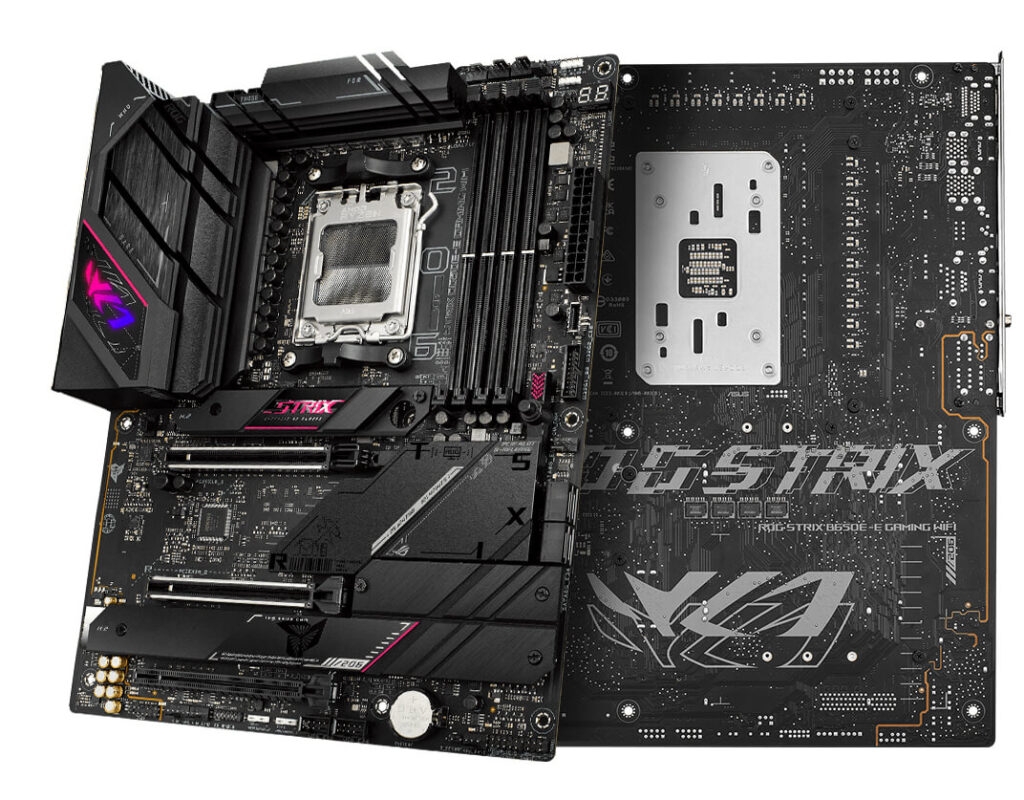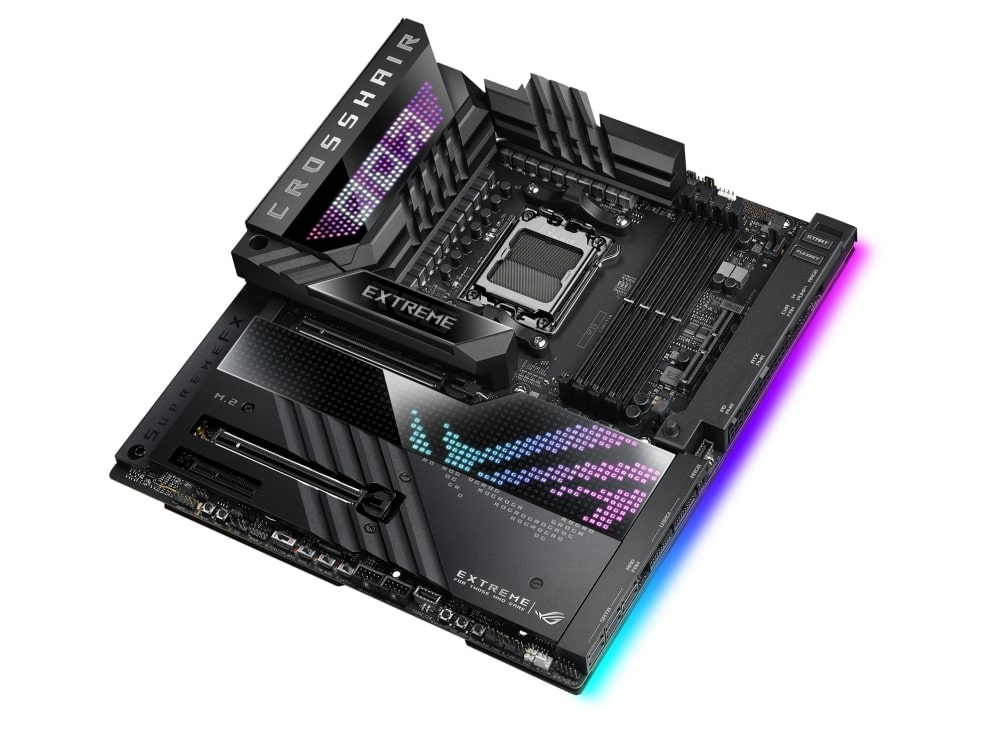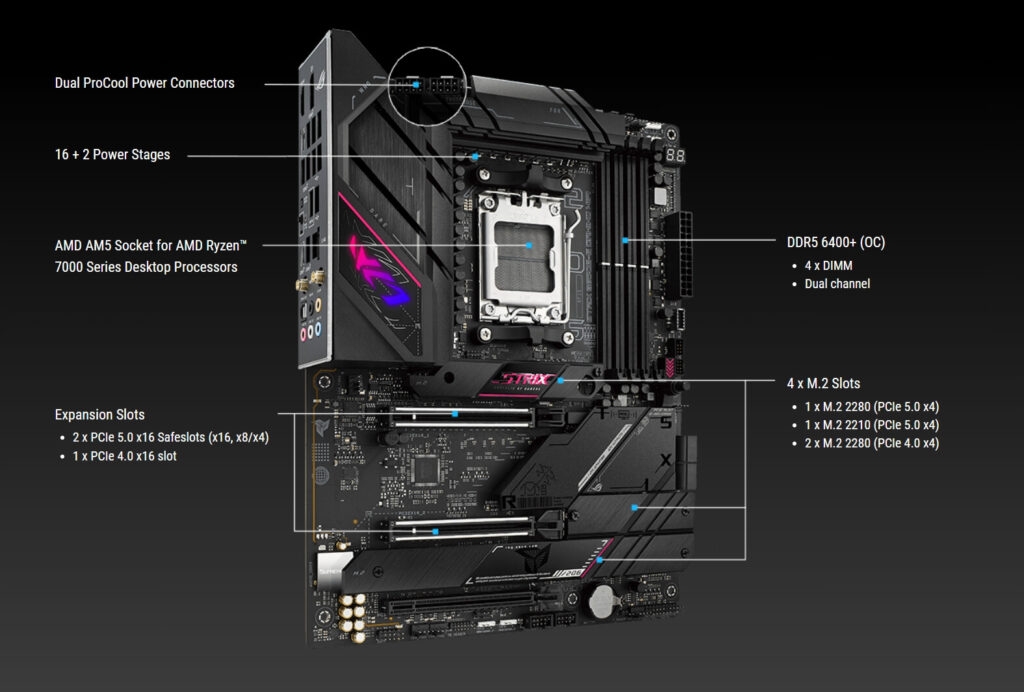Two of the most popular motherboard chipsets for gaming PCs are the AMD B650 and X670. This article will compare these two chipsets and help you decide which is right for your needs.
B650 vs. X670 – Which one is Better?
The older X570 Versus B550 motherboard mentality is evident when we examine both motherboard chipsets. Although the X670 is the superior chipset, the B650 probably has a lower price. Nevertheless, we anticipate the X670 will provide more features than its rival. Now, let’s examine what consumers receive with both motherboard chipsets.
B650: Features and Specifications
The B650 chipset is designed for mid-range and budget gaming PCs. It supports the latest AMD Ryzen 7000-series processors and provides plenty of features for a reasonable price. The B650 chipset is built on a 14nm process, which means it is not as power-efficient as some newer chipsets. However, it still offers excellent performance and is a great choice for gamers on a budget. PCIe 5.0 lanes are probably present on higher-end B650s. Otherwise, probably, PCIe 5.0 lanes won’t be supported by entry-level B650 motherboards. For instance, no PCIe 5.0 lanes are equipped on the MSI B650-P motherboard. Mostly because B650E motherboards include PCIe 5.0 lanes as a feature, the MSI B650-P does include 28 PCIe Gen 4.0 lanes, though, so large data transfers should not be a problem. The AMD B650 features PCIe 4.0 since it is not the latest but is standard for connecting high-speed components like graphics cards and NVMe solid-state drives. It provides twice the bandwidth of PCIe 3.0, which can make a big difference in gaming performance. The B650 chipset also supports up to two PCIe 5.0 x16 slots for running multiple graphics cards in SLI or CrossFireX configurations. The B650 chipset also supports up to four USB 3.2 Gen 2 ports, six SATA III ports, and dual-channel DDR5 memory up to 6400 MHz. It also features an integrated Ethernet controller, which is ideal for gamers who prefer a wired connection.
X670: Features and Specifications
Now let’s take a closer look at the AMD X670 chipset. The X670 chipset is designed for high-end gaming PCs and enthusiasts. It is built on a more advanced 7nm process, which means it is more power-efficient and performs better than the B650 chipset. The X670 chipset is also more expensive than the B650 chipset, which is something to keep in mind if you are on a budget. One of the key features of the AMD X670 chipset is PCIe 5.0 support. PCIe 5.0 is the latest standard for connecting high-speed components and provides twice the bandwidth of PCIe 4.0. This means that the X670 chipset can handle even the most demanding gaming components without issues. The X670 chipset also supports up to four PCIe 5.0 x16 slots for running multiple graphics cards in SLI or CrossFireX configurations. The X670 chipset also supports up to eight USB 3.2 Gen 2 ports, eight SATA III ports, and quad-channel DDR5 memory up to 6400 MHz. It also features an integrated Ethernet controller, which is ideal for gamers who prefer a wired connection.
B650 vs X670: Overclocking Capabilities
To those who aren’t aware, overclocking is increasing the clock speed of a computer component, such as the CPU, GPU, or RAM, to boost performance. This is achieved by increasing the voltage and clock speed of the component beyond its factory specifications. The B650 chipset is the latest iteration of the mainstream AMD chipset, designed to work with AMD’s Ryzen 7000-series CPUs. It offers support for DDR5 memory and PCIe 5.0 architecture. The X670 chipset, on the other hand, is the premium AMD chipset designed to work with the Ryzen 7000 series CPUs. It supports DDR5 memory and PCIe 5.0 and AMD’s advanced features, such as Precision Boost Overdrive (PBO) and Smart Access Memory (SAM). When it comes to overclocking, the B650 chipset is a solid performer. It offers good stability and can handle moderate overclocking with ease. However, it does not offer as many advanced features as the X670 chipset. For example, it cannot adjust individual core voltages, limiting the potential for fine-tuned overclocking. It also lacks support for advanced features such as PBO and SAM, which can further enhance performance. The X670 chipset, on the other hand, is a top-tier overclocking platform. It offers advanced features such as PBO and SAM, which can significantly boost performance when paired with a compatible CPU and GPU. It also offers fine-tuned control over individual core voltages, allowing more precise overclocking. Additionally, the X670 chipset offers excellent stability and can easily handle extreme overclocking. Regarding memory overclocking, both chipsets offer support for DDR5 memory and can achieve high frequencies with compatible memory modules. However, the X670 chipset offers better memory overclocking capabilities due to its advanced memory management features, such as Memory Infinity Fabric (MIF), which can improve memory stability and performance. Overall, while the B650 chipset is a solid performer in overclocking, the X670 chipset is the clear winner regarding advanced features and extreme overclocking capabilities. However, it’s worth noting that overclocking can be a complex and risky process and should only be attempted by experienced users who understand the potential risks and how to mitigate them. It’s also important to use high-quality components and follow best practices to ensure a safe and stable overclocking experience.
B650 vs X670: USB Ports
When choosing a motherboard, one of the most important factors to consider is the number and type of ports it has. We’ll compare the USB ports on these two chipsets to help you decide which is right. First, let’s look at the B650 chipset. This chipset supports up to six USB 3.2 Gen 2 ports, which offer a maximum data transfer rate of 10 Gbps. It also supports up to six USB 2.0 ports with a maximum transfer rate of 480 Mbps. Additionally, the B650 chipset supports USB Power Delivery, allowing for faster charging compatible devices. Now let’s turn our attention to the X670 chipset. This chipset supports up to ten USB 3.2 Gen 2 ports, which, like the B650, have a maximum transfer rate of 10 Gbps. However, the X670 chipset also supports up to four USB 3.2 Gen 2×2 ports with a maximum transfer rate of 20 Gbps. These ports are typically found on high-end motherboards and are designed for demanding tasks such as data transfer or video editing. The X670 chipset also supports USB 4.0, which offers even faster data transfer rates and supports multiple high-resolution displays. If you’re a casual user who mainly uses your computer for web browsing, emailing, and light gaming, the B650 chipset should suffice. Its six USB 3.2 Gen 2 ports offer plenty of high-speed connectivity for most users, and the USB Power Delivery support means you can charge your devices quickly. However, if you’re a power user who frequently works with large files, edits video, or needs multiple displays, the X670 chipset may be a better choice. Its ten USB 3.2 Gen 2 ports provide ample high-speed connectivity, while the four USB 3.2 Gen 2×2 ports and USB 4.0 support offers even faster transfer rates and support for multiple displays. The X670 motherboard is also a good choice if you plan to upgrade your computer in the future, as it offers more room for expansion.
B650 vs. X670 Which is Right for me?
So which motherboard is right for you? The answer depends on your needs and budget. If you are on a tight budget and don’t need the latest and greatest features, the AMD B650 motherboard is a great choice. It offers excellent performance and plenty of features for a reasonable price. However, if you are a hardcore gamer or enthusiast who needs the latest and greatest technology, the AMD X670 motherboard is the way to go. It offers better performance, features, and support for the latest PCIe 5.0 standard.
Wrapping it All
In conclusion, the AMD B650 and X670 chipsets are great for building a gaming PC. The B650 chipset is ideal for mid-range and budget gaming PCs, while the X670 chipset is designed for high-end gaming PCs and enthusiasts. Here are our recommendations for the best AM5 motherboards,
Best B650: Gigabyte B650 AORUS Elite AX Best B650E: Asus ROG Strix B650E-E Gaming Wifi Best X670: Gigabyte X670 AORUS Elite AX Best X670E: Asus ROG Crosshair X670E Extreme
Regardless of which chipset you choose, make sure to do your research and choose a motherboard that fits your needs and budget. With the right motherboard, you can build a gaming PC that will provide better efficiency and long-lasting performance without any hiccups. Further Reading:
Motherboard: Function, Components, and Types Top 10 Unique PC Cases to Buy “What RAM Type Do I Have?” – Find Your RAM Config. Before Upgrading



